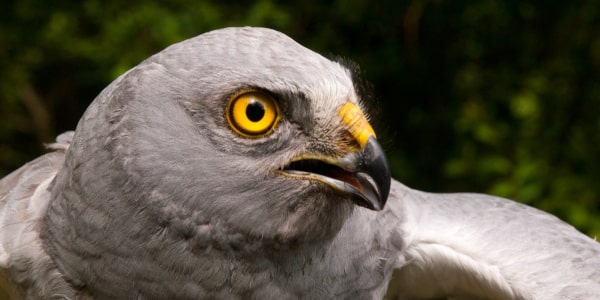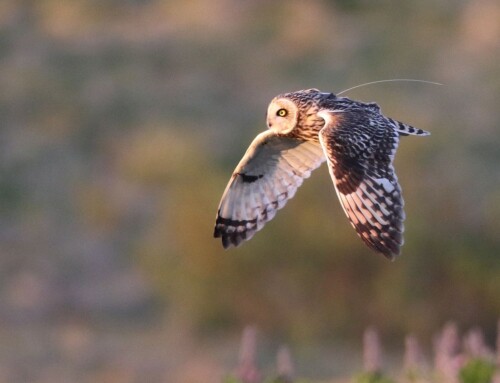LINKED PAPER
Limited accessibility and bias in wildlife-wind energy knowledge: A bilingual systematic review of a globally distributed bird group. Fernández-Bellon, D. 2020. Science of the Total Environment. DOI: 10.1016/j.scitotenv.2020.140238. VIEW
The global climate emergency and biodiversity crisis are intrinsically linked in many ways, and efforts to slow climate change often go hand in hand with attempts to prevent biodiversity loss. Wind energy represents an unusual link between the two, as it plays a key role in strategies to curb climate change by reducing our dependence on fossil fuels but can also be a cause of biodiversity loss. In fact, the accelerating growth in wind energy developments has led experts to state that understanding and minimising the environmental impacts of wind energy is one of the main challenges to the sector if it is to become a truly sustainable form of energy (Katzner et al., 2019).grey literature

Wind energy can impact wildlife in different ways. Collisions with wind turbines kills birds and bats. Changes in land use during wind farm construction and ongoing disturbance during operation can displace wildlife or result in habitat loss. Problematically, these impacts vary greatly across species, regions, and sites, making it difficult to develop a single strategy to minimise biodiversity loss. In the absence of a one-size-fits-all solution to the ecological challenges posed by wind energy, it is crucial to develop a comprehensive understanding of wildlife-wind energy interactions. Just as important is for this knowledge to be accessible to stakeholders involved in decision-making at different stages of the wind energy development process
Harriers and wind energy
Harriers (Circus sp.) are diurnal birds of prey found on every continent except Antarctica. There are 16 harrier species worldwide, all occupying open habitats where they hunt small mammals and birds. Of the 16 species of harriers, 11 are experiencing global population declines and three are listed as endangered on the IUCN Red List of Threatened Species (BirdLife International, 2019). Even those species that are not globally endangered are often considered to be of conservation concern at regional or country scales.

Despite early assessments suggesting that wind farms had limited impacts on harriers, more recent work has questioned these findings, exemplifying the uncertainty that surrounds wind farm effects on wildlife in general. We set out to review harrier-wind farm literature to help develop a comprehensive understanding of the impacts of wind farms on harriers, and to assess broader patterns in wildlife-wind energy knowledge. To expand the review’s coverage, literature searches were performed in both English and Spanish across two general and two field-specific databases. The result, 235 relevant harrier-wind energy literature sources covering 12 harrier species across 31 countries and two marine areas.
The systematic review confirms the widespread overlap between harrier species and wind energy developments. Harrier species are generally considered to be highly sensitive to wind farm developments, with largest impacts on populations expected from habitat effects rather than from collisions. Although collision rates are generally reported to be lower than for other birds of prey, harriers can be at high risk of collisions at some sites. New technologies which accurately record flight path and heights will help reduce the existing uncertainty surrounding collision risk for harriers. Despite the perceived importance of habitat effects, studies assessing their impact on harriers or indeed on their populations are limited. This highlights the need for further research on how changes in land use during wind farm construction and disturbance during operation modify the suitability of habitats used by harriers and what effects such changes may have at a population scale.
Wildlife and wind energy
The systematic review of harrier-wind energy interactions also gives an insight into patterns in the broader field of wildlife-wind energy knowledge. Grey literature dominates wildlife-wind energy knowledge (77% of harrier-wind energy sources). What is more, this is likely to be an underestimate, as in many cases there is little incentive for grey literature, such as environmental impact assessment reports (EIAs), to be made publicly or digitally available. Therefore, we can expect that this is just the tip of the iceberg, and that there is a large amount of grey literature that is inaccessible. The remaining 23% of sources corresponds to peer-reviewed papers. The vast majority of these, however, are behind publisher paywalls – up to 91% of all peer-reviewed sources on harrier-wind energy interactions require payment to gain access. When one considers that wildlife-wind energy research is primarily aimed at informing best practice, this is contradictory, as stakeholders involved in decision-making do not usually have institutional access to peer-reviewed journals.

Beyond issues of accessibility and availability, three sources of bias were also apparent from the systematic search results. Searches in Spanish yielded only 11% of the literature sources reviewed. When one considers that Spanish is the language overlapping with the largest number of harrier species globally, this is quite surprising. Although scientific work is often published in English regardless of researchers’ nationality, this is not the case for grey literature. The lack of grey literature sources in Spanish found by the review indicates biases in digitally accessible knowledge, as grey literature (EIAs) exist in Spanish-speaking countries but are again simply not accessible online.
Bias is also apparent in the taxonomical and geographical distribution of sources (Fig. 3). Four species dominate the harrier-wind energy literature. Coincidentally, these are the four species that commonly occur across Europe and North America, where 75% of all literature sources are published. Therefore, rather than a specific interest in these species, this bias is likely due to higher production of harrier-wind energy knowledge in these regions, compared to the rest of the world. This effect is probably further magnified by geographical disparities in accessibility to online repositories, as well as by broader issues of scientific knowledge transfer between these areas and the rest of the world.
The future of wildlife-wind energy knowledge
The aim of wildlife-wind energy knowledge, whether it be in grey literature or peer-reviewed form, is to advance our understanding of the impacts of wind energy on wildlife and inform best practice. For this to be possible, knowledge needs to be made available and accessible to all stakeholders. Initiatives such as Tethys and AWWIC online wildlife-wind energy knowledge repositories are important first steps in this direction, but they still suffer from many of the biases outlined above. There is an urgent need for widespread implementation of open practices by all stakeholders, including governments, policymakers, developers, environmental consultants, and researchers. Only through active knowledge sharing can our understanding of the impacts of wind farms grow at the same rate as developments and help align wind energy with conservation priorities.
References and further reading
BirdLife International and HBW. 2018. Bird species distribution maps of the world. Version 2018.1. Available from: https://datazone.birdlife.org/species/requestdis. VIEW
Katzner, T.E., Nelson, D.M., Diffendorfer, J.E., Duerr, A.E., Campbell, C.J., Leslie, D., Vander Zanden, H.B., Yee, J.L., Sur, M., Huso, M.M. & Braham, M.A. 2019. Wind energy: An ecological challenge. Science 366: 1206. VIEW
Image credit
Top right: Male Hen Harrier (Circus cyaneus) © Darío Fernández-Bellon





